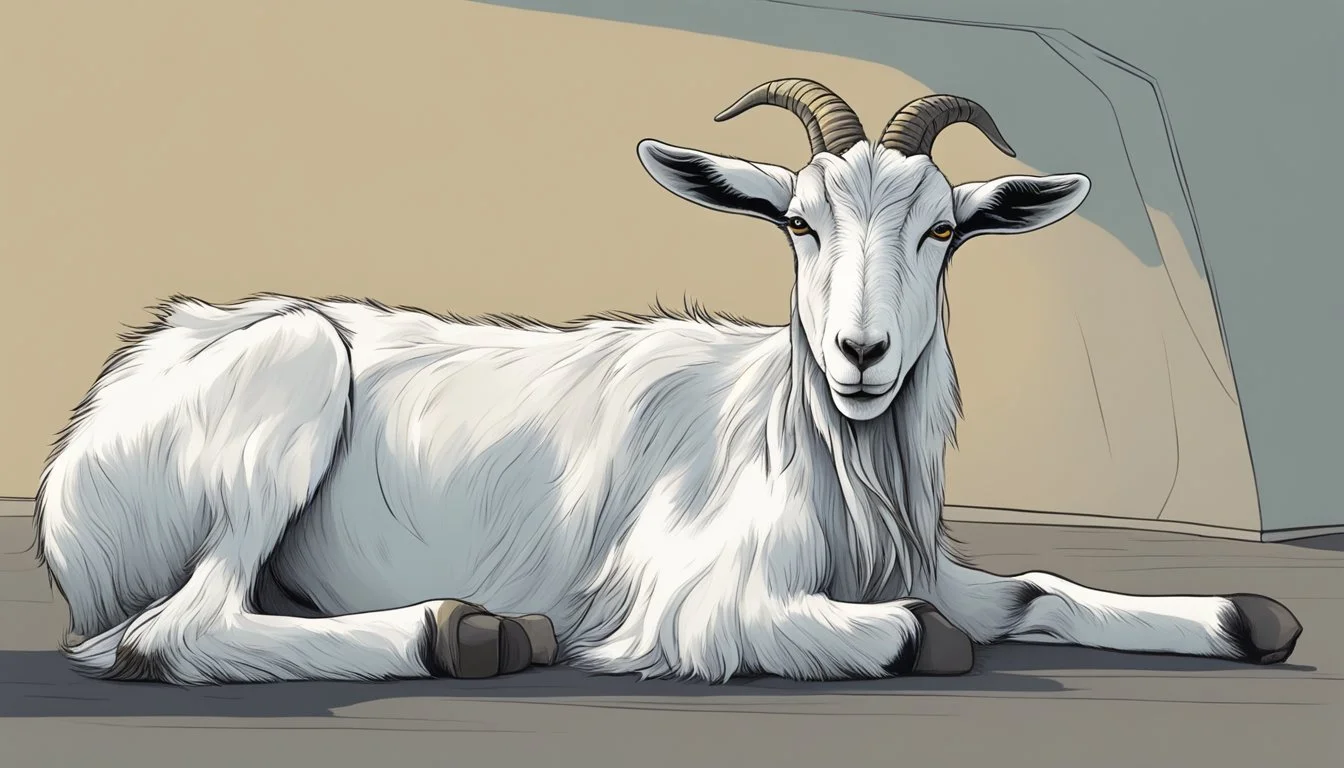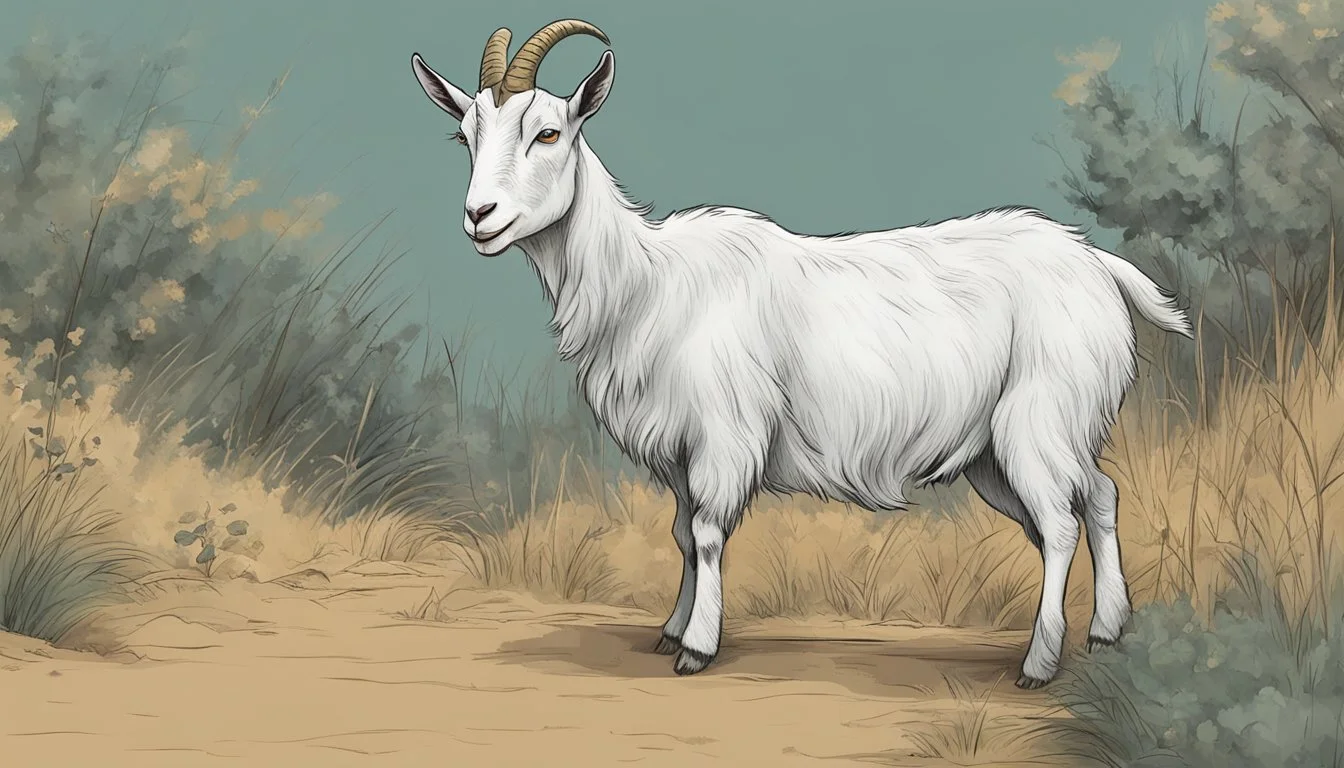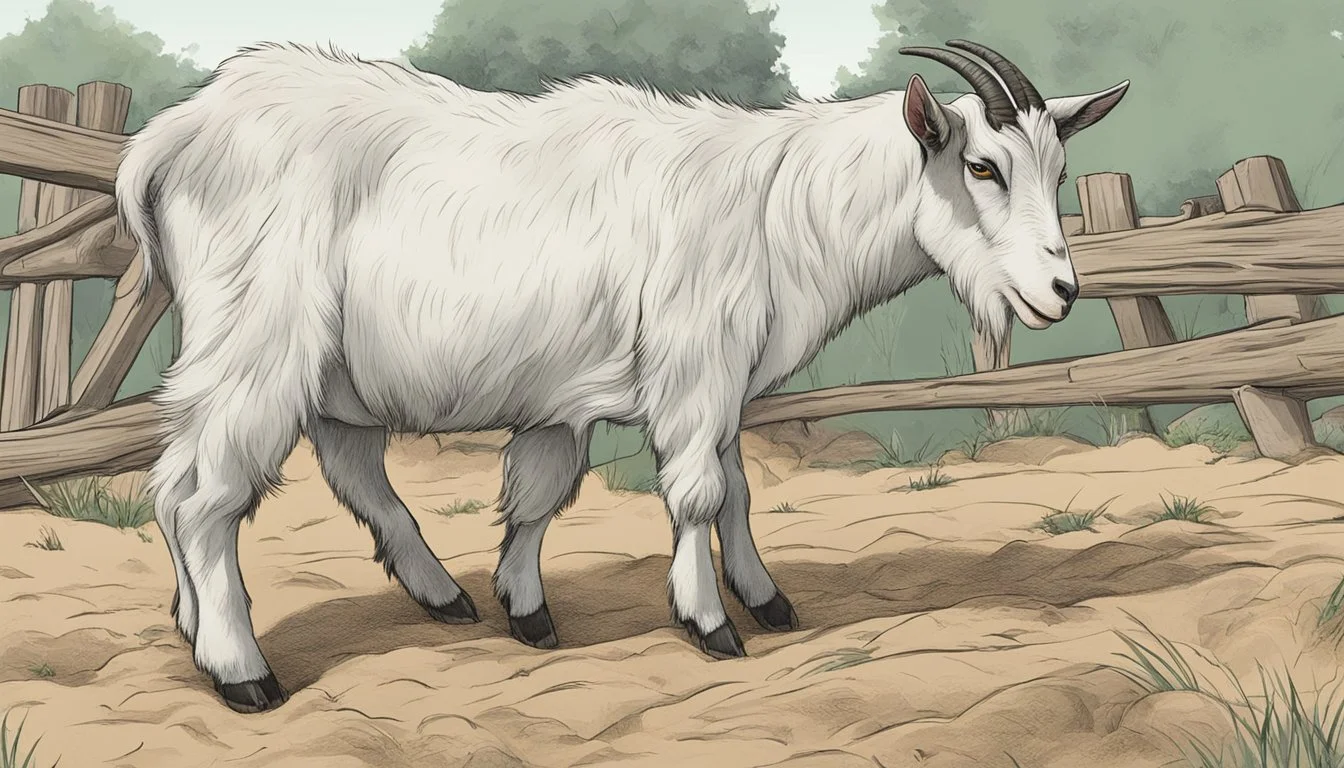What Are the Signs of Labor in Goats and Kidding Duration Insights
Understanding the signs of labor in goats is crucial for livestock owners and farmers, as it allows for timely intervention and support during the kidding process. Goats, known for their hardiness and relative ease of birthing, display a variety of indicators that can signal the start of labor. These indicators are part of a biological staging that alerts owners to the imminent arrival of newborn kids. Recognizing these signs can also reduce the risk of complications and ensure the wellbeing of both the doe and her offspring.
Labor signs in goats can range from behavioral shifts to physical changes, and knowing what to expect helps manage the birthing process efficiently. Changes in the tail ligaments, udder development, and alterations in the goat's appetite and demeanor are common indications that kidding is near. Alongside these signs, the timeline for labor and delivery can vary from goat to goat, with factors such as the doe's health, breed, and the number of kids being birthed influencing the duration.
The kidding process typically unfolds over a few distinct stages, starting with early labor and ending with the passage of the afterbirth. Pre-labor signs are often subtle and may go unnoticed, but as active labor approaches, the signs become more apparent. Early intervention and proper care during this time are paramount for ensuring a successful delivery. Knowledge of these processes is instrumental in preparing for and supporting goats through a healthy kidding season.
Understanding Goat Pregnancy
When managing goat pregnancy, farmers need to be aware of the length of the gestation period, recognize the physical changes in the doe, and provide proper nutrition and care to ensure a healthy kidding process.
Gestation Period
The gestation period for a goat is typically around 150 days, although it can vary from 145 to 155 days. It's crucial for farmers to track the breeding dates to accurately predict the kidding timeline, allowing for appropriate preparations as the due date approaches.
Physical Changes in Doe
As pregnancy progresses, a pregnant doe will undergo various physical changes. Notable signs include an enlarged abdomen, development of the udder, and softening of the ligaments near the tail base as labor approaches. These signs help indicate that the doe is nearing the end of her pregnancy.
Nutrition and Care
Proper nutrition and care during pregnancy are vital. A pregnant doe's diet should be well-balanced with sufficient energy, protein, vitamins, and minerals. Farmers should ensure the food is of high quality, particularly in the later stages of pregnancy when the kids are growing rapidly, and the doe's nutritional needs are highest. Regular veterinary check-ups and a quiet, clean kidding environment are also essential parts of prenatal care.
Recognizing Labor Signs
Goat owners must be vigilant as the due date approaches, observing the doe closely for specific physical and behavioral changes that indicate labor is imminent. Precise recognition of these signs can ensure timely assistance during the kidding process.
Physical and Behavioral Changes
When a goat is nearing labor, you often observe a profound alteration in both physical appearance and behavior. The doe's udder may start to fill out, an occurrence known as bagging up, which can begin a few weeks to just days before labor. Restlessness, pacing, or other unusual behaviors are indicators as well. A swollen vulva and the doe seeking seclusion, often referred to as nesting, are additional behavioral changes signaling that labor could be near.
Pre-Labor Signs
As kidding approaches, tail ligaments become loose, which can be felt at the base of the tail. When these ligaments are so loose that your fingers can wrap around the tail head, it often means active labor will start within a day. A noticeable sunken sides appearance occurs as kids move into birthing position, with the abdominal area taking on a hollowed look.
Immediate Labor Indicators
Immediate labor indicators involve more definitive signs. Tail ligaments are gone, and contractions become visible. There might also be a clear or cloudy discharge from the vulva. At this stage, the doe’s discomfort is evident; she may lie down and stand frequently, vocalize, or exhibit signs of abdominal pain. These immediate signs are a call to action – preparation for kidding should be finalized as birth is likely within hours.
Preparing for Kidding
When anticipating goat kidding, one must ensure that all preparations are in place for a safe and controlled birthing process. A well-prepped kidding kit, a secure and comfortable kidding area, and an informed goat owner are crucial to the successful delivery of kids.
Kidding Kit Essentials
A properly stocked kidding kit is indispensable. It should contain:
Clean Towels: For drying newborn kids to stimulate breathing and warmth.
Iodine Solution: To disinfect the umbilical cord and prevent infection.
Disposable Gloves: For cleanliness and biosecurity during the birthing process.
Obstetrical Lubricant: To assist with difficult deliveries if intervention is necessary.
Setting Up the Kidding Area
The kidding area should be:
Isolated: To keep the doe and newborns away from interference by other animals.
Dry and Warm: To ensure the comfort and health of the doe and the kids.
Bedded with Pine Shavings: Providing soft material for the doe to nest and for the kids to land on.
Goat Owner's Preparation
The goat owner must:
Acquire knowledge on the signs of labor and the birthing process.
Be equipped to provide assistance if complications arise during kidding.
Ensure they can commit time to monitor the goat closely during the late stages of pregnancy and kidding.
By addressing these elements, one can be as prepared as possible for the arrival of new kids.
Stages of Labor in Goats
The labor process in goats encompasses three distinct stages, from the initial signs of early labor to the final expulsion of the placenta. Understanding these stages is crucial for goat owners, especially during kidding season, to ensure they can provide the necessary care and assistance.
First Stage: Early Labor
In the first stage of labor, a goat's cervix begins to dilate, preparing for the delivery of kids. This stage can last from a few hours to several days. During early labor, goats often become restless, isolate themselves, and may refuse to eat. Observable signs include tail ligament softening, which is considered one of the most reliable indicators that labor is imminent, potentially within 24 hours.
Second Stage: Active Labor and Delivery
As a goat enters the second stage of labor, active labor is underway. This is characterized by visible abdominal contractions, pushing, and the water breaking. The goat will actively work to deliver her kids, which can typically occur within 30 minutes to an hour of active labor starting. If the delivery is proceeding normally, the doe will birth her kids without the need for intervention.
Third Stage: Expulsion of Placenta
Finally, the third stage of labor involves the expulsion of the placenta. This can happen immediately following delivery or take up to several hours. It is essential that the placenta is expelled completely to prevent post-partum complications. Goat owners should monitor the doe during this time to ensure that the third stage concludes without incident.
Post-Kidding Care
After the delivery process, focus shifts to ensuring the health and wellbeing of both the newborns and their mother. Immediate attention to the kids' and doe's requirements is essential for a successful post-kidding period.
Immediate Newborn Care
Immediately following birth, it is critical to ensure that the newborn kids receive colostrum within the first few hours as it is packed with nutrients and antibodies vital for the kids' immune systems. The standard is to supply at least 10% of the birth weight in colostrum. For instance, a 5-pound kid should receive at least 0.5 pints. Temperature regulation is also paramount; thus, the newborns must be kept dry and warm to maintain a stable body temperature.
Doe's Recovery
The doe's recovery after kidding is equally important. She will require close observation to ensure she expels the placenta completely and does not exhibit any signs of distress or illness. Additionally, proper bonding between the doe and her kids is facilitated by allowing them to remain together, promoting maternal instincts and successful future feeding.
Feeding and Nutrition Post-Kidding
Post-kidding, the doe's feeding and nutrition needs escalate to replenish her strength and to facilitate milk production. High-quality forage and a balanced diet that may include increased protein and calcium will support her recovery and lactation. It's important to monitor the kids to ascertain they are feeding adequately and gaining weight. In some cases, vaccinations are administered to both the doe and kids to prevent common post-kidding diseases and infections.
Common Kidding Complications
When kidding does not follow the normal process, goat owners might encounter complications. Being aware of how to handle such situations can ensure the health and safety of both the doe and the kids.
Dystocia and Intervention
Dystocia refers to a difficult birth, where kids are unable to exit the birth canal. Several factors, such as fetal oversize or malpresentation, contribute to this condition. If signs indicate that a doe is struggling with dystocia, it may be necessary for a vet to perform an intervention. Immediate actions include repositioning the kid or providing assistance to ease the delivery. When intervention from a goat owner or a vet is required for dystocia, they may need to use lubrication and gentle manual manipulation to correct the kid's position for a successful birth.
Detecting Abnormalities Post-Delivery
After a normal delivery, monitoring the doe and kids for any signs of abnormalities is essential. A vet should be consulted if the doe exhibits excessive or malodorous vaginal discharge, indicating possible postpartum complications. Additionally, observing the kids for signs of being weak or ill is critical to address any issues promptly. Prompt removal of the placenta is important; if it does not pass naturally within a few hours post-delivery, it may require veterinary attention to prevent infection.
Caring for Kids
After kidding, attention quickly shifts to ensuring the newborn kids receive proper care. They rely on their caretakers for vital nutrition and monitoring in their first moments and the weeks to follow.
Initial Feeding and Colostrum
Newborn goats, or kids, must consume colostrum within their first few hours of life. This early milk is rich in antibodies and nutrients critical for building a strong immune system. Caretakers often ensure that kids receive at least 10% of their body weight in colostrum. If kids are unable to nurse, bottle feeding with colostrum from the mother or a high-quality commercial substitute is crucial.
Ongoing Care and Monitoring
Following the initial feeding, kids require ongoing neonatal care. They should be kept in a warm, dry environment free from drafts. Caretakers must monitor for signs of illness or distress, including poor appetite or abnormal behavior. Regular feeding is essential, with the schedule depending on whether kids are nursing or bottle feeding. Additionally, they should receive appropriate vaccinations and deworming as part of their health care routine, as recommended by a veterinarian.
Management Practices for Successful Kidding
Effective management practices are crucial for successful kidding in goats. They involve meticulous record keeping, rigorous nutrition and health management, and close breeding cycle monitoring. These practices help ensure the health of both the doe and her offspring, increasing the likelihood of a smooth kidding process.
Record Keeping
Maintaining a detailed goat management binder is a cornerstone in raising goats successfully. Records should include each doe's breeding dates, expected kidding dates, and past parturition history. This information is vital in anticipating labor and preparing for the arrival of kids. Accurate record-keeping also tracks health records, vaccinations, and any complications or interventions in previous births.
Nutrition and Health Management
A balanced diet rich in nutrients is essential for a pregnant doe's health and successful kidding outcome. Key components should include quality forage, grains, and mineral supplements tailored to each stage of gestation. Regular veterinary check-ups and timely vaccinations prevent illnesses that could complicate the kidding process. Close attention to the doe's nutritional intake and health status is one of the most effective goat farming tips for breeding success.
Breeding Cycle Monitoring
Understanding and tracking the goat reproduction cycle can significantly impact kidding outcomes. Seasonal breeding and knowing when a doe is in estrus contribute to planned gestation and birthing. Monitoring signs of impending labor allows the farmer to provide assistance if necessary, especially during the critical period when labor is about to commence. This level of attentiveness is part of the nuanced art of goat farming.




